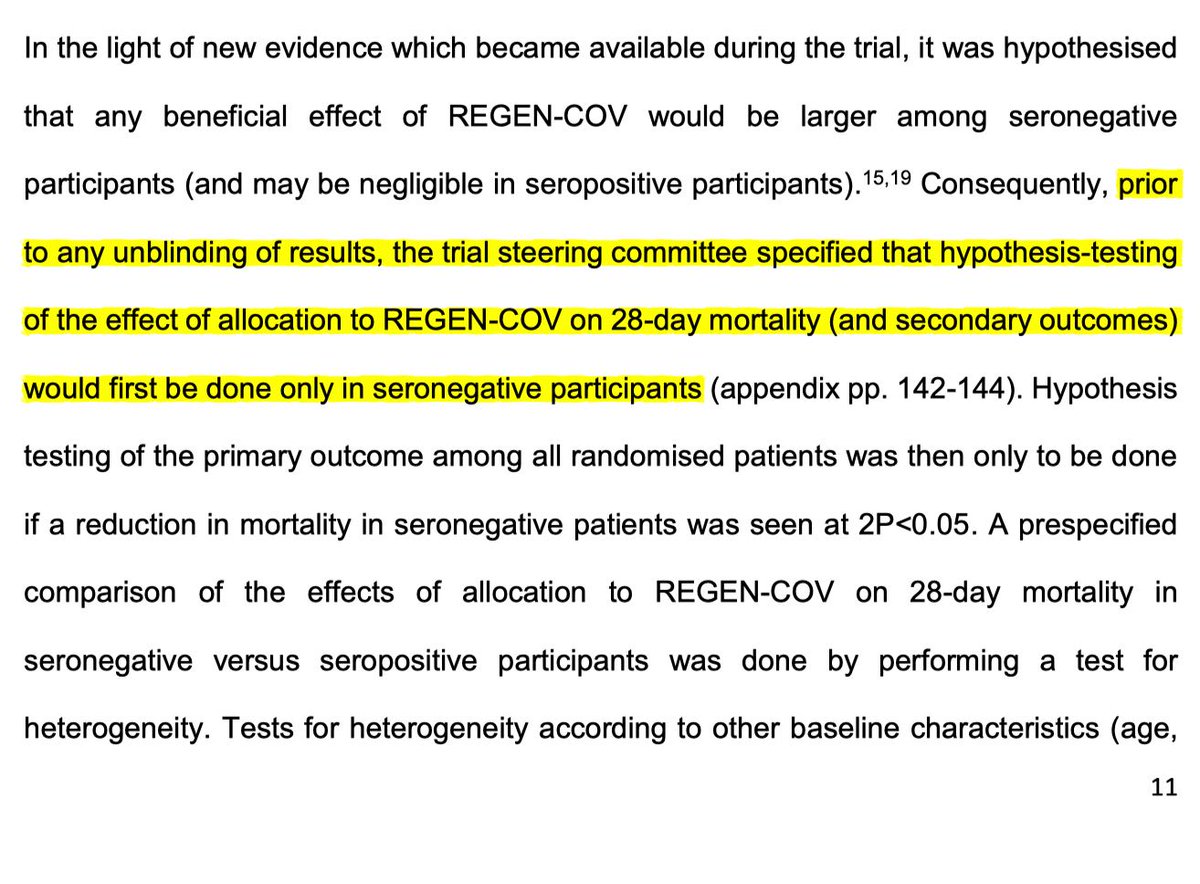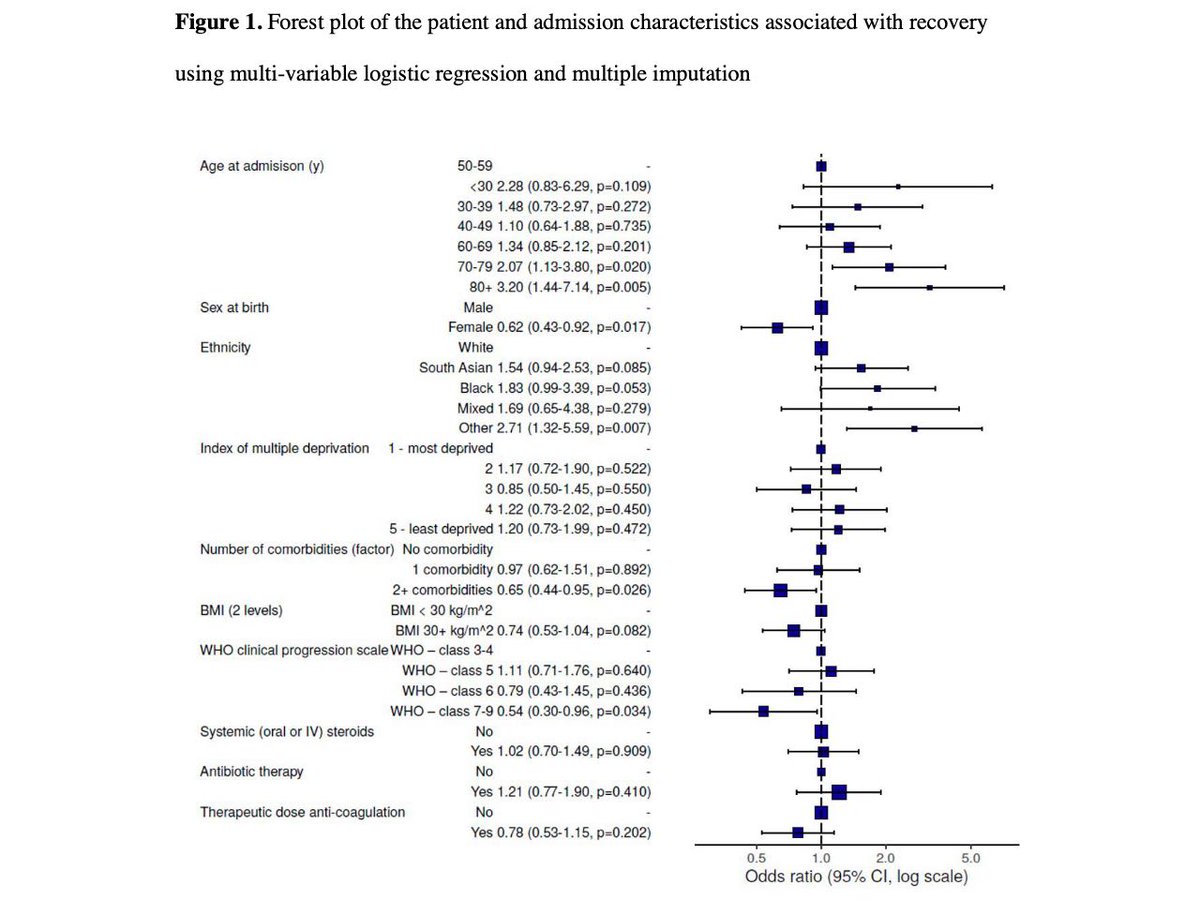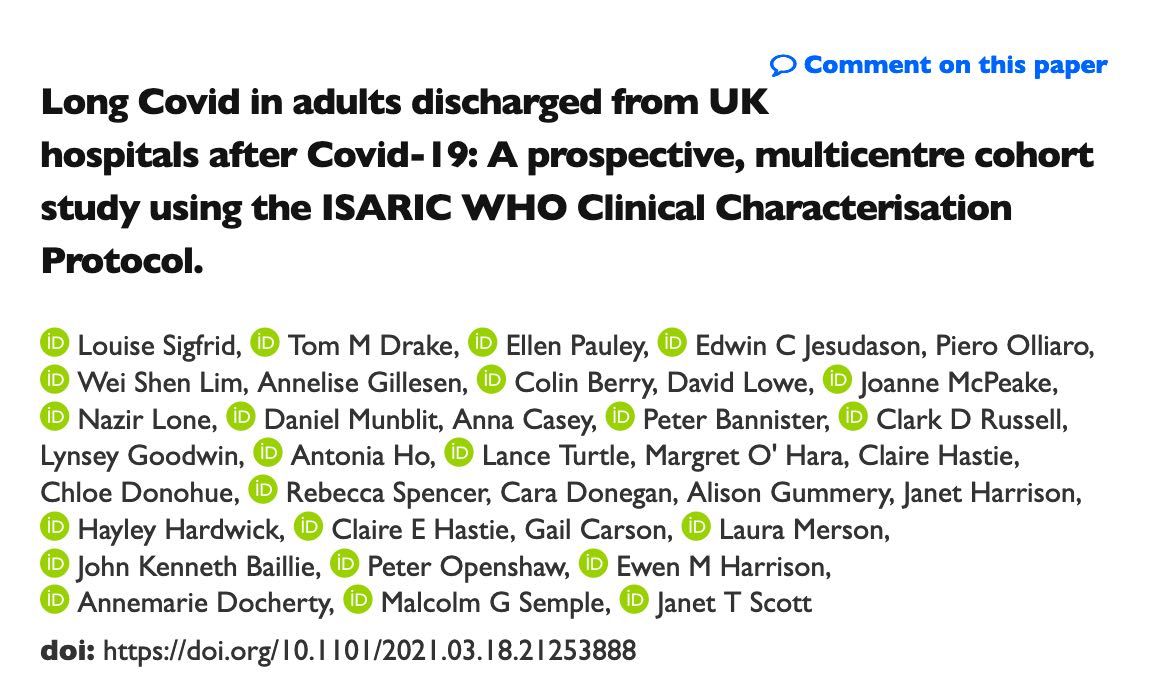
Another remarkable trial from the RECOVERY team. This time 'Casirivimab and imdevimab in patients admitted to hospital with COVID-19’ - and with an impressive finding. Kudos @PeterHorby @MartinLandray and all contributors. Now on @medrxivpreprint medrxiv.org/content/10.110… #COVID19 

@PeterHorby @MartinLandray @medrxivpreprint They studied @Regeneron monoclonal antibodies (casirivimab and imdevimab). They report: 'In patients hospitalised with COVID-19, the monoclonal antibody combination ... reduced 28-day mortality among patients who were seronegative at baseline.' 

@PeterHorby @MartinLandray @medrxivpreprint @Regeneron An important finding in this trial is that the effect of the monoclonal antibodies was present in hospitalized patients with COVID-19 who were seronegative, but not those who were seropositive. A key insight into who benefits. 

@PeterHorby @MartinLandray @medrxivpreprint @Regeneron And the trial has lessons for us all in the way that they adapted it as other evidence was emerging; prior to blinding they refined the hypothesis. This is a brilliant approach and was done with scientific rigor. So much to learn from how this group is conducting research. 

@PeterHorby @MartinLandray @medrxivpreprint @Regeneron So again, kudos to RECOVERY Collaborative Group. They are not only providing essential evidence, but also demonstrating power of cooperative research, large simple trials, & exemplary execution. Their record is a challenge to us all to develop the culture to make this normative.
• • •
Missing some Tweet in this thread? You can try to
force a refresh
















